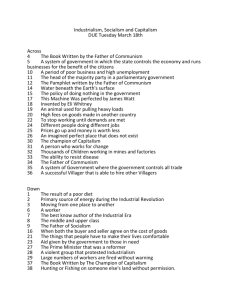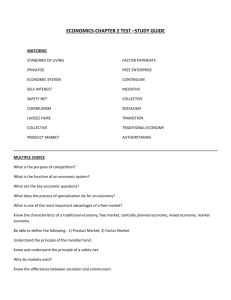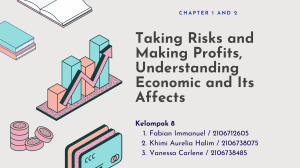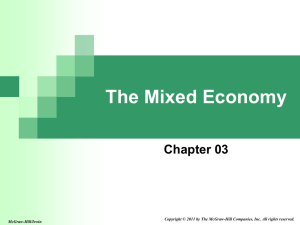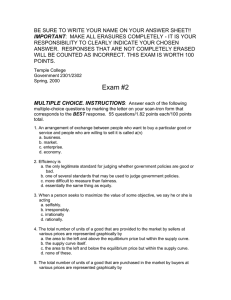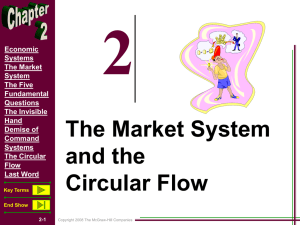The American Economic System
advertisement
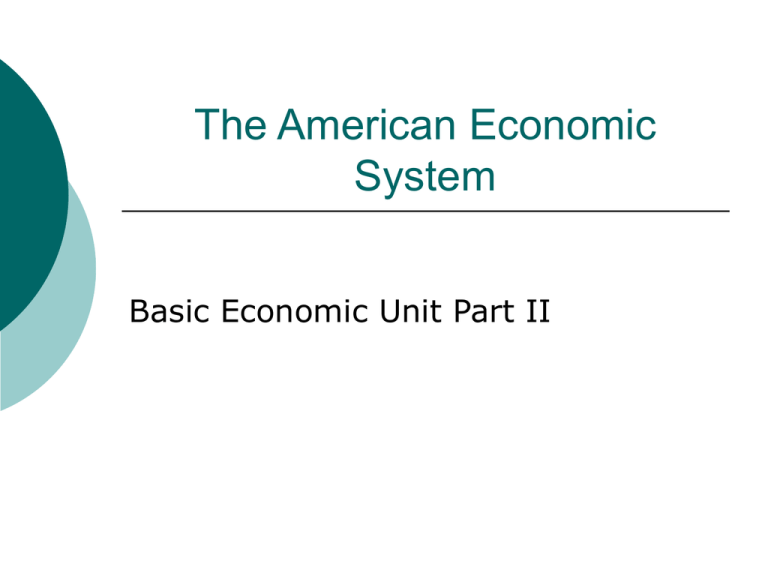
The American Economic System Basic Economic Unit Part II Types of Economic Systems Traditional Characteristics: Little Change Based on Custom How answer the economic questions? How they always have Command Characteristics Government controls means of production Little individual influence Communism & Socialism How answer the economic questions? Government does Socialism Gov. owns some factors of production and distributes products and wages Communism Socialism under the dictatorship of the communist party Market Characteristics: Private individuals control the factors of production Individual freedom How questions answered? By businesses and consumers Mixed Characteristics: Some individual freedom some government control How are questions answered? Individuals do but have some government intervention All economies are actually mixed. What determines whether an economy is considered market or command depends on the level of Government involvement. Who developed the principles of a market economy? Adam Smith What was the Wealth of Nations? Smith’s book that explained the principles of Capitalism What did Smith mean by Laissez-faire economics? “To let alone” Government should stay out of marketplace except to ensure competition The Invisible Hand Belief that individuals on their own would work for own self-interest Would be guided by “invisible hand” to use resources efficiently Characteristics of Market/Free Enterprise System Little or no government intervention – governments role in econ. is to ensure competition Free Enterprise – Competition with little gov. interference Freedom of Choice – individuals can choose what work to do and what we buy Characteristics Continued Private Property – right to own and use our property as we choose within certain legal limits Profit Incentive – the driving force of capitalism, the ability to accumulate wealth Competition – the struggle between buyers and sellers to get the best products at lowest prices What does the Circular Flow Model illustrate? How resources, goods and services, and money flow in a circular pattern Market The exchange of goods and services between buyers and sellers Factor Market Where productive resources (the factors of production) are bought and sold Product Market Market where goods and services (finished products) are offered for sale What happens when less is exchanged in the circular flow? The economy shrinks, productivity goes down What happens when more is exchanged? Economy grows, productivity increases What is productivity? The amount of output that can be produced by a set amount of resources in a given period of time Productivity Goes up when can produce the same amount of output in less time Or When can produce more output with same amount of resources in same time Increasing Productivity Specialization when people, businesses or countries focus on what they do best Division of Labor breaking down of a job into small parts performed by different workers Investing in Human Capital spending to improve worker skills What do these practices create between individuals, communities and nations? Economic Interdependence creates dependence between people for goods and services


